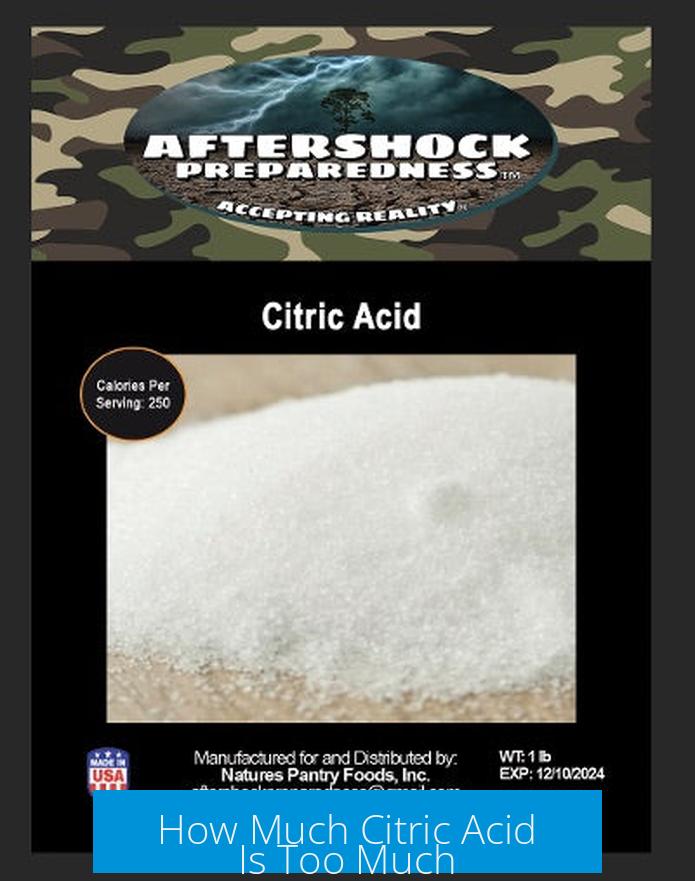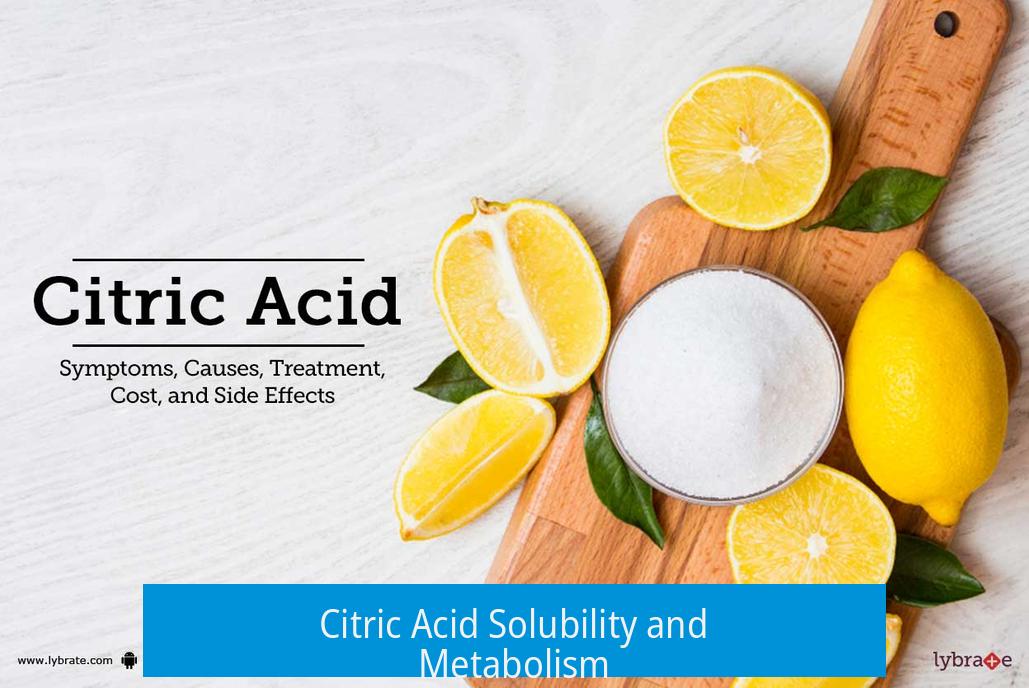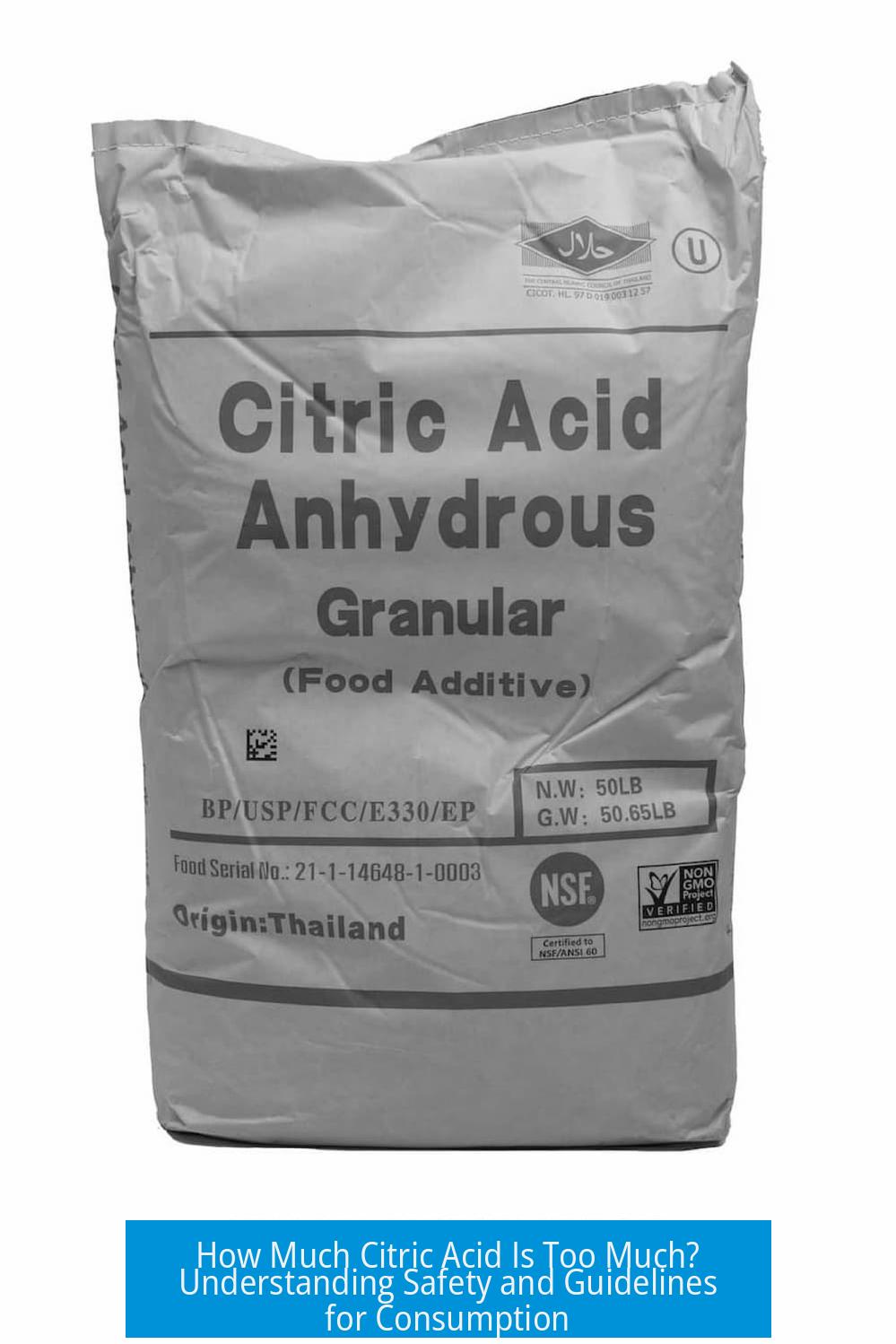How Much Citric Acid Is Too Much?

Citric acid is generally safe in typical dietary amounts because the body efficiently processes excess quantities, making it hard to consume too much in everyday use. However, excessive intake can cause specific issues like tooth enamel erosion. Understanding the safe limits and effects is essential for healthy consumption.
Citric Acid Solubility and Metabolism

Citric acid dissolves well in water, allowing the body to filter and eliminate excess amounts without difficulty. This natural metabolism reduces the risk of harmful accumulation from common dietary sources, such as citrus fruits and food additives.
Potential Harm from High Intake
Although the body handles citric acid efficiently, consuming large amounts increases acidity in the mouth. This elevated acid level can erode dental enamel over time, leading to sensitivity and tooth decay. Avoiding excessive intake or rinsing with water after consuming acidic foods can help protect teeth.
Toxicity Levels and Safety
| Parameter | Value |
|---|---|
| LD50 (oral, rats) | 6730 mg/kg |
The acute oral toxicity of citric acid is low. For context, the LD50 (dose lethal to 50% of test rats) is 6730 mg/kg body weight, indicating minimal risk from normal dietary consumption. Nevertheless, specific safety data sheets (SDS) provide detailed chemical hazard and handling info.
Practical Usage Guidance
For culinary use, start with a small amount such as half a teaspoon for a meal serving four people. Adjust according to taste preferences, similar to seasoning with salt. This moderate use stays well within safe consumption parameters.
Precautions and Advice
While small doses are unlikely to cause harm, consulting a dentist can be helpful if you plan to increase citric acid intake significantly. This prevents dental issues related to acid exposure.
Key Takeaways
- The body efficiently filters out excess citric acid, minimizing toxicity risk.
- Excessive citric acid can erode tooth enamel due to its acidity.
- Acute toxicity is very low; normal dietary amounts are safe.
- Use citric acid sparingly in cooking, starting with about half a teaspoon for four servings.
- Consult a dentist if increasing dietary citric acid to protect dental health.
How Much Citric Acid Is Too Much? Unpacking the Citrus Puzzle
If you’re wondering, how much citric acid is too much? the quick answer is: it’s pretty hard to overdo it in typical dietary amounts. Citric acid slips nicely into your body’s filtration system, so reaching dangerous levels systemically is unlikely. But, before you go sprinkling it like magic sparkles on every meal, let’s dive deeper. Because—spoiler alert—it can mess with more than just your taste buds.
Let’s chew on this citrus conundrum, shall we?
Citric Acid and Your Body: A Water-Soluble Buddy
Citric acid is water soluble, meaning it loves to dissolve in fluids—whether that’s your lemonade or your bloodstream. The kidneys do a stellar job filtering out excess citric acid, so your body doesn’t store much of it. Imagine a diligent bouncer at a club, kicking out the extra citric acid before it becomes a party crasher.
This efficiency means typical consumption rarely raises any red flags when it comes to systemic toxicity. Got an extra tangy snack? Your body handles it without breaking a sweat.
So, What Could Go Wrong? Acidic Impact on Your Teeth
Here’s where the sour side of citric acid shows up. Being an acid, it has a knack for eroding dental enamel. Think of your tooth enamel as the bodyguard for your teeth, shielding them from decay. But continuous exposure to acidic substances, like lots of citric acid, slowly wears down that armor.
If you gulp a lot of citrus drinks or add generous amounts of citric acid to food, your teeth might start feeling sensitive or look a bit dull. It’s not an immediate crisis, but a slow, sneaky erosion that could lead to cavities down the line.
Ever noticed that super tangy lemonade leaving your teeth feeling like a chalkboard? Yup, that’s the acid at work.
Safety First: Toxicity Levels in Perspective
Let’s talk numbers—and don’t worry, it’s not as scary as it sounds. In lab rat studies, the LD50 (or lethal dose for 50%) is about 6730 mg/kg orally. For context, that means an enormous amount of citric acid is needed before acute poisoning risks kick in. So your half teaspoon in dinner? No sweat.
If you are a data nerd or planning industrial uses, checking the product’s Safety Data Sheet (SDS) is a must. It offers detailed safety info and handling precautions, but for seasoning your meals? This is like reading the instruction manual on how to turn the toaster on—good to know but mostly straightforward.
Cooking with Citric Acid: How Much to Use?
Curious how to get the perfect zing without causing damage? Start simple. Using citric acid as a seasoning is like dancing—it’s all about balance and taste. If cooking a meal that serves four people, try starting with around half a teaspoon of citric acid. Mix it with salt for flavor harmony.
Adjust the amount to your liking—too little and it’s a wallflower, too much and it steals the show. Like salt, go easy and tune it to your taste buds. Your food will thank you.
Prudence Pays: When to Chat with Your Dentist
Even though small doses pose no threat, why not mentally bookmark a dental check? Planning to increase citric acid consumption long term? A quick consultation with your dentist could save your enamel’s day. They can offer personalized advice or suggest protective measures against potential tooth wear.
Remember, acids don’t discriminate. Your teeth aren’t fans of acid, no matter how friendly it looks in a food label.
Quick Recap with a Tangy Twist
- Citric acid gets processed and kicked out efficiently. Your body doesn’t accumulate harmful levels under typical diet conditions.
- Teeth beware! High intake may damage dental enamel over time.
- Toxicity? Not really. Acute doses needed for harm are very high—far beyond everyday seasoning use.
- Seasoning tip: Start with half a teaspoon for four servings, adjust to taste.
- Dental check? Probably smart if you get citric acid-heavy regularly or want to avoid enamel erosion.
Wrapping It Up
So, how much citric acid is too much? Most folks won’t reach dangerous levels just by enjoying their zesty foods and drinks. Your kidneys and body chemistry are on the job. But your teeth have a more delicate constitution—handle with care.
Like many things in food, moderation is key. Sprinkle citric acid sensibly, savor the burst of flavor, and don’t forget to check in with your dentist if you plan a long-term citrus acid fiesta. After all, keeping your smile healthy lets you enjoy all the tangy delights life serves up.
Feeling inspired to mix up your meals with some citric acid? Go ahead, but keep that half teaspoon rule handy and flash a grin that’s as bright as your food tastes!
How much citric acid can I consume before it becomes harmful?
Your body can filter out excess citric acid efficiently. It’s rare to consume enough to be harmful from food alone.
Can eating too much citric acid damage my teeth?
Yes. Citric acid is acidic and can erode tooth enamel if consumed in large amounts over time.
Is citric acid toxic at normal consumption levels?
No. Toxicity is very low at typical dietary amounts. The lethal dose in rats is much higher than what people consume.
What is a safe amount of citric acid to use in cooking?
Start with about half a teaspoon for four servings. Adjust to taste like you would with salt.
Should I consult a professional before increasing citric acid in my diet?
It’s a good idea to speak with your dentist before making big changes involving acidic foods.





Leave a Comment